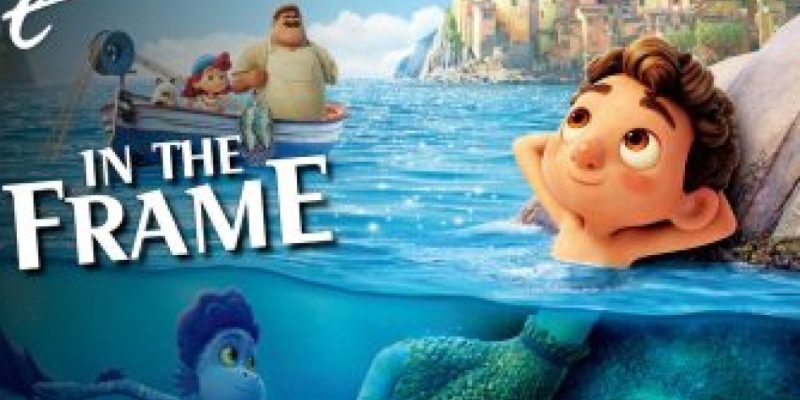Luca is a reminder that we live in the era of post-peak Pixar. It is also proof that this isn’t the end of the world.
The narrative of Pixar’s decline is a familiar one. Critics have been making it for at least eight years at this point. Pixar has become more prolific in recent years, doubling up on releases in 2015, 2017, and 2020. Of the 24 Pixar films, 13 have been released since 2010. Quantity does not correlate to quality. Of those 13, only three rank among the studio’s 10 highest-rated films on Rotten Tomatoes, and only two make the top 10 as determined by Metacritic.
There is also an argument to be made in creative terms. Pixar’s first 10 films contained only a single sequel, Toy Story 2. That film would have a major impact on the company’s evolution, sitting at the center of a contractual disagreement that would lead Disney to just buy the company outright. Many pundits blame Disney’s market strategy for Pixar’s decline, and it’s true that, of the studio’s next 11 films, seven were sequels, prequels, or spin-offs. (Pixar seemingly drew the line at Planes.)
It has occasionally felt like Pixar’s unique identity has been swallowed by Disney. Several of the company’s recent films could easily have come from Disney’s in-house animation studio. Brave plays with the classic “Disney Princess” archetype, with Merida (Kelly Macdonald) even folded into the parent company’s brand and appearing in Ralph Breaks the Internet. Onward is set in a magic kingdom not too far removed from the Disney default. Even Luca broadly evokes The Little Mermaid.
The narrative of Pixar’s decline exists in opposition (or perhaps reaction) to the studio’s commercial and awards dominance over the past decade. The studio’s eleventh film, Toy Story 3, became the first animated film to earn over $1B. Of the studio’s total $14.6B box office, $8.6B came from the 11 films between Toy Story 3 and Toy Story 4 inclusive. This is the tip of the iceberg. In 2011, Pixar revealed that it had sold over $10B of Cars merchandise. That was before the two sequels.

The Academy Award for Best Animated Feature was only introduced in 2002, arguably in response to the Oscars’ tendency to overlook films like Toy Story 2. Ironically, Pixar would not win the category until its third attempt. These days, Pixar is considered a dominant force in the category. It won 11 of the past 18 awards. No other studio has claimed more than three victories. As a point of comparison, Pixar director Pete Docter has personally won the award three times.
As such, it’s possible to read some resentment into this narrative of creative decline from critics and fans. It is easy to root for an underdog, but Pixar stopped being an underdog long ago. It is something of a cliché to express a preference for an artist’s earlier work, a trend that extrapolates outwards into criticisms of the “sophomore slump” or the inevitable “selling out” that comes with success. Pixar was once the scrappy outsiders. Now it is a subsidiary of a cultural monolith.
Of course, anything that Pixar did would seem like a creative disappointment after its early run. Toy Story literally invented the feature-length computer-generated animated film, arguably creating a new medium unto itself. Toy Story pushed American studios away from traditional hand-drawn animation towards computer-rendered animation. Elvis Mitchell has compared the cultural impact of the computer-generated animation in Toy Story to that of the use of sound in The Jazz Singer.
Pixar followed Toy Story with a run of acclaimed films that proved the studio was more than just a technological powerhouse. Toy Story 2, Finding Nemo, The Incredibles, Ratatouille, WALL-E, Up, and Toy Story 3 all demonstrated the company’s mastery of narrative. Pixar refused to condescend to its audience. The company’s success was only heightened in contrast to the creative and commercial slump that Disney was experiencing with movies like Treasure Planet and Atlantis: The Lost Empire.

Allowing for occasional missteps (or cynical calculations) like Cars 2, that early run of Pixar is a monumental cultural accomplishment. It is at least comparable to the success of the Disney Renaissance and the work of Hayao Miyazaki at Studio Ghibli, but with the added edge of pioneering a new approach to the artform. Any animation house would suffer when measured against such an impressive filmography, even Pixar itself.
There is a valid argument to be made that the most dynamic work in animation is happening outside of Pixar and that the company’s commercial and award dominance is obscuring the work of younger studios like Cartoon Saloon. Cartoon Saloon is in a similar position to early Pixar. Each of its first four feature-length films has received glowing reviews and earned a nomination for Best Animated Feature, but the studio has yet to take home a little gold man.
Pixar also suffers by comparison because its competition has caught up. Disney’s in-house animation studio enjoyed a resurgence over the past decade owing to the critical and commercial success of novelties like Zootopia and Wreck-It Ralph alongside the reinvigoration of the classic “Disney Princess” template with Tangled, Frozen, Moana, and even Raya and the Last Dragon. Even DreamWorks has managed to craft artful and emotional adventures like How to Train Your Dragon.
All of this is relative. Even if one accepts the narrative of Pixar’s decline, the studio still enjoys a consistency that eludes most American animation studios. Of the animated movies that went to streaming at the start of the pandemic, there is no qualitative comparison between Onward and offerings like Trolls World Tour or Scoob!. Similarly, Toy Story 4 compares well to contemporaries like Spies in Disguise, The Angry Birds Movie 2, Ugly Dolls, The Secret Lives of Pets 2, and even Frozen II.

More to the point, Pixar is arguably doing exactly what a studio should be doing in the aftermath of what might be termed the company’s “imperial phase.” It is using its market dominance to invest in new filmmakers and new stories. Pixar committed to four consecutive original projects after Toy Story 4: Onward, Soul, Luca, and Turning Red. The last time the studio had such an extended run of non-established properties was before Toy Story 3.
Pixar has also demonstrated introspection in the wake of internal disarray. In November 2017, Rashida Jones and Will McCormack stated that they had departed Toy Story 4 because they found that women and minorities did not have “an equal creative voice” at the company. John Lasseter, the director of Toy Story and a guiding light for the studio, announced that he was leaving the company in July 2018 following sexual harassment complaints.
Pixar responded to these crises with consideration. After the departure of Jones and McCormick, Pixar recruited Stephany Folsom into the company’s “Brain Trust” to help shepherd the character of Bo Peep (Annie Potts) in Toy Story 4. The company took great care in how it presented the Mexican Day of the Dead in Coco, including hiring Mexican American co-director Adrian Molina. For Soul, featuring the company’s first black protagonist, Pixar put together a group of “cultural consultants” including Questlove and Quincy Jones and hired playwright Kemp Powers as co-director.
Pixar’s recent films have broadened the company’s perspective, covering a wider spectrum of the human experience. Coco offers a very culturally specific vision of the afterlife. Soul is a love letter to jazz as an artform. Luca is set on the Italian Riviera during the 1950s. If director Domee Shi’s work on the short film Bao is any indication, that specificity will carry over to Turning Red. The company isn’t trying to replicate its past successes; it’s using them to do something different.

While these films have not been embraced as universally as the company’s earlier smashes, many have strong and impassioned defenders. This is most obvious looking at Coco, which enjoyed a reappraisal as a classic from its (already positive) initial reviews. Nine months after release, Jia Tolentino described it as “the definitive movie for this moment” in The New Yorker. Two years after release, Andy Golder at Buzzfeed named it “the best Pixar movie.”
I described both Soul and Luca as “minor Pixar,” and I stand by that. Still, it’s easy to understand how these films could resonate strongly with particular audiences. The low-stakes Miyazaki- and Fellini-inflected hangout vibe of Luca seems especially likely to strike a chord with audiences wanting something gentler and sweeter than the norm. To paraphrase a musical, Luca seems more likely to be nine people’s favorite thing than a hundred people’s ninth favorite thing.
Perhaps this era is Pixar’s “wilderness” years, a period in which the studio is struggling to tap into the same cultural energies that established it as a creative powerhouse. If that is the case, all wilderness eras should aspire to be so interesting. Even accepting that its recent output hasn’t measured up to that of the studio’s early golden age, it is still much more satisfying than a lot of what Disney produced during its own animation wilderness periods during the 1980s and the 2000s.
Pixar seems unlikely to ever recapture the once-in-a-lifetime magic of its turn-of-the-millennium run. This is only natural; times change and companies with them. However, there’s something reassuring in the fact that the studio doesn’t seem to be trying to recapture those earlier successes, understanding that they were the product of a different time and place. Instead, Pixar is leveraging that success to do interesting things.
There are certainly worse ways to respond to success.
